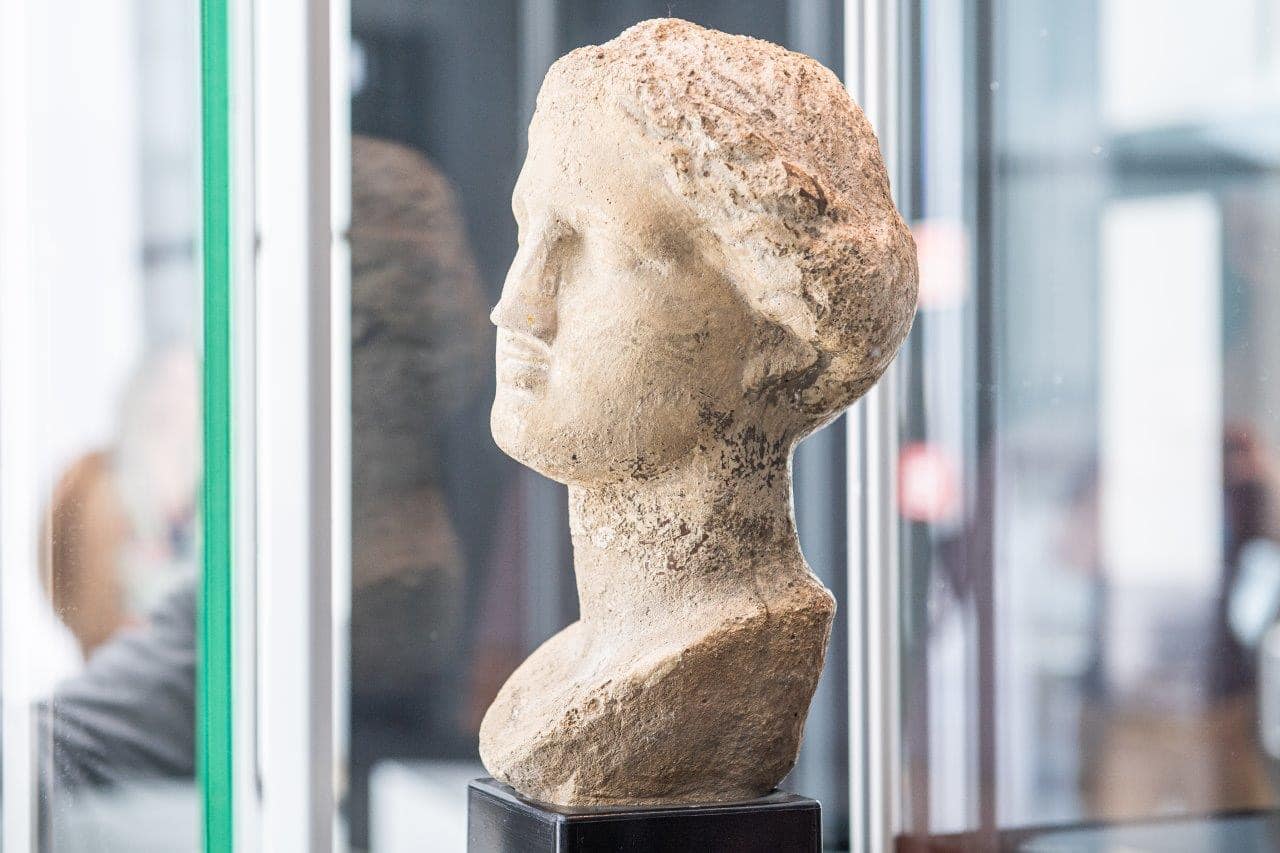The historic basilica will be rebuilt, serving as the resting place of some of the greatest Hungarian kings.Continue reading

In June 2023, a Roman-era object from a private collection in Ghent appeared in the catalog of an auction house in Bruges, Belgium. The limestone female head, presumably of Pannonian origin and dating from the imperial period, was said to have originated in Székesfehérvár (central Hungary), reports Magyar Nemzet.
Károly Belényesy, the professional director of the King St Stephen Museum (Szent István Király Múzeum), learned about the Roman artifact on 10 June, and the Brussels authentication document identified the ancient Pannonia, more specifically Székesfehérvár, as the place of origin. The object was a finely Roman carving of a woman’s head, offered for sale by a private collector in Ghent.
“We thought that the Székesfehérvár provenance could not be a coincidence, so the object immediately attracted our attention when it turned up. As we had no reason to doubt either the authenticity or the provenance of the object, we attempted to acquire it outside the auction. This was unsuccessful as the owners insisted on an open auction.
The antique, depicting a woman’s head, was finally sold at open auction for around €4,000,”
emphasized Károly Belényesy, who added that the region’s Roman heritage is extremely rich.
According to the authenticity certificate, the 305 mm high and 152 mm wide artifact is in good condition, the nose of the female head being a later addition. According to the museum’s technical director,
the ancient head is made of limestone and the face is that of an idealized young female figure, presumably representing a goddess. It is thought to have been part of a full-figure sculpture.
After the exhibition, the sculpture will undergo a series of scientific tests, careful cleaning and restoration, that may provide new information about its creation and place of origin, and may also provide new data about the Roman history of the region, noted Károly Belényesy.
Recovering artifacts with urban or regional links that have been lost abroad is not an everyday occurrence. The King St Stephen Museum in Székesfehérvár, with the continuous renewal of its exhibition spaces, is in a position to “repatriate” artifacts that have a proven link to Székesfehérvár, or Fejér county, whether they are in foreign or domestic collections.
The artifact can be viewed in its current, pre-restoration state in the visitor center of the museum until the end of August 2023,
after which an analysis will be carried out using a non-destructive research method, and the restoration process will begin based on the results of this research. The head, as an artifact of outstanding beauty and cultural heritage of Fejér County, will be included in the archaeological collection of the museum.
Via Magyar Nemzet, Featured image via Facebook/Dr. Cser-Palkovics András